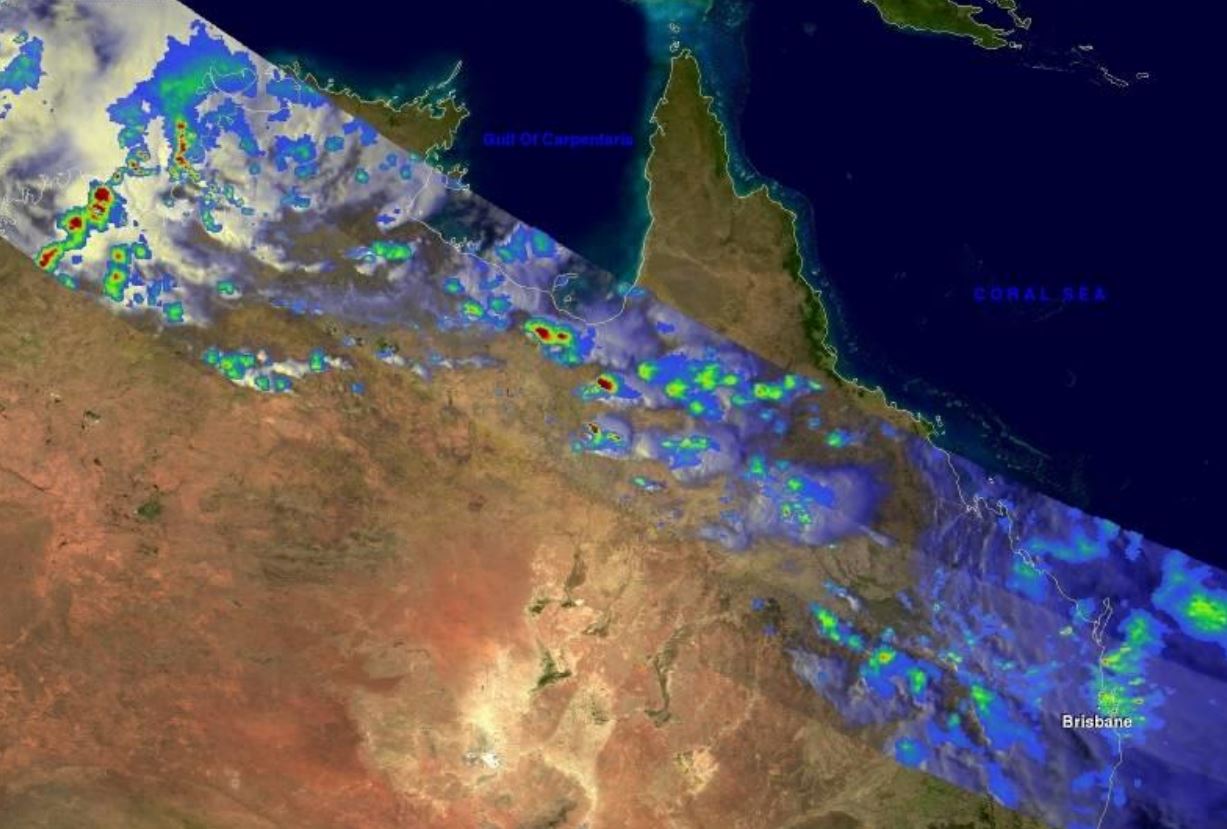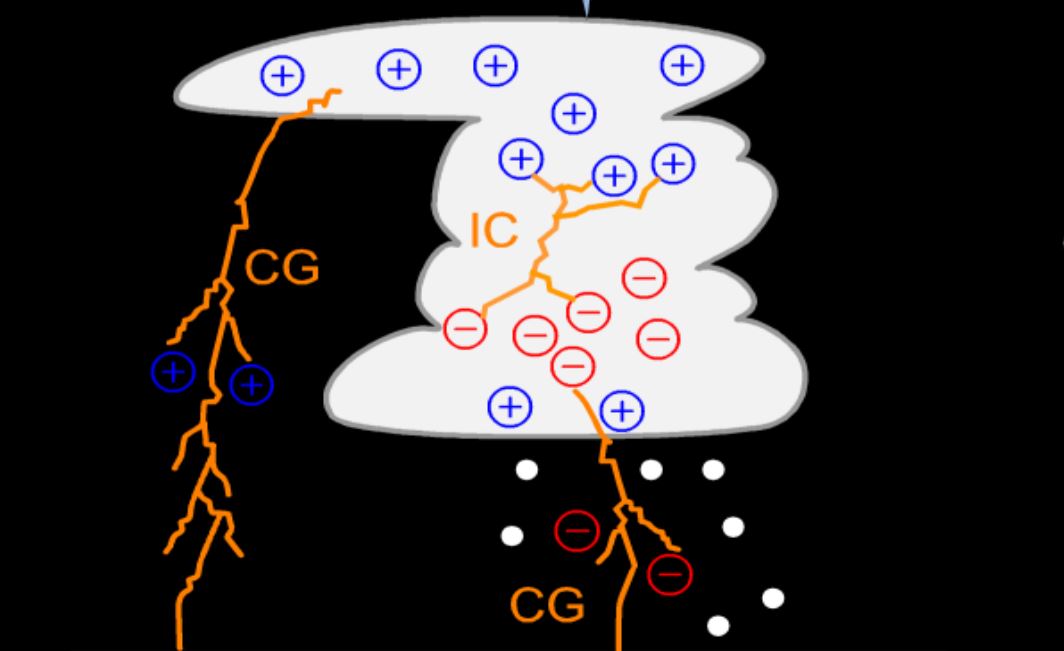Satellite skills and knowledge for operational meteorologist
Listed here are other resources related to Satellite skills and knowledge for operational meteorologist tag:
Note: click on an image to open the Resource
Rob Roebeling presents the concept and the applicability of the method developed at KNMI to calculate precipitation occurrence and intensity from cloud physical properties retrieved from passive imager satellite data onboard geostationary satellites.
Length: 30 min
Author: Rob Roebeling (EUMETSAT)
This lecture presents the concept, the validity, and the applicability, of the method developed at the Royal Netherlands Meteorological Institute (KNMI) to calculate precipitation occurrence and intensity from cloud physical properties retrieved from passive imager satellite data onboard geostationary satellites.
A brief introduction will be given on the concept of the cloud physical properties retrievals and the precipitation retrievals, as well as an underpinning why cloud physical properties are pre-eminently suitable for quantitative precipitation retrievals. The validity of the precipitation retrievals will be demonstrated for Europe (and Africa), using weather radar and gridded rain-gauge data to perform a triple-collocation statistical evaluation. For this evaluation, the precipitation retrievals are derived using the Spinning Enhanced Visible and Infrared Imager (SEVIRI) onboard Meteosat Second Generation satellites, the weather radar data are obtained from the common European integrated weather radar system, and the gridded rain gauge observations are obtained from the Global Precipitation Climatology Centre (GPCC) and/or the European Climate Assessment and Data set (ECA&D). The spatial and temporal dependence of the respective errors are presented and discussed.
The results suggest that the gridded rain-gauge datasets agree very well with the precipitation retrievals from SEVIRI, while they agree weakly with the weather radar observations. Part of these differences is caused by the fact that the weather radar products are based on different radars and algorithms, whereas the precipitation retrievals from SEVIRI have the advantage to be based on a single instrument. Since observations from single weather radar can be used to determine temporal variations in precipitation it is concluded that these observations are best suited for studying the diurnal or seasonal variations at a local scale.
The lecture will conclude with some examples for using the precipitation retrievals from SEVIRI for specific weather and climate applications.
Marie Doutriaux-Boucher explains the operational Multi-Sensor Precipitation Estimate (MPE) product.
Length: 30 min
Author: Marie Doutriaux-Boucher (EUMETSAT)
Since 2004, EUMETSAT is deriving the Multi-Sensor Precipitation Estimate (MPE) product operationally. The MPE product retrieval is based on a blending technique that uses microwave information from SSMI-S instrument onboard DMSP-F16 polar satellite and infrared information from the Spinning Enhanced Visible and Infra Red Imager (SEVIRI) instrument onboard MSG geostationary satellites. It consists of a rain rate given every 15 minutes at MSG pixel resolution (3x3km2). Although the retrieval is not a state-of-the-art technique, the product has proven to be quite robust and valuable for deep convective precipitation detection. This presentation will present the MPE product and show some example of potential improvements for future SEVIRI precipitation product.
Federico Porcu gives an overview on the Hydro-SAF precipitation products.
Length: 49 min
Author: Federico Porcu (University of Bologna)
The Satellite Application Facility for supporting operational hydrology and water management (H-SAF), established in 2005 as part of the EUMETSAT SAF network, is designed to provide the user community with new satellite-derived products from existing and future satellites with sufficient time and space resolution to satisfy the needs of operational hydrology. Three hydrological variables are considered(soil moisture, snow at the ground and precipitation) and a number of related parameters are made available to the user community, with a quantitative description of their accuracy.
Precipitation products are derived from algorithms based on different satellite data (active and passive microwave, visible/infra-red) and approaches (artificial neural network, Bayesian statistics, pattern recognition) to provide the most advanced set of precipitation product over Europe, and, in the next future, over Africa. The use of H-SAF precipitation products to study the severe meteorological events occurred in Italy in the autumn 2014 showed their potential as additional tools in monitoring heavy rainfall, especially in cases when conventional, ground-based instruments are not able to fully describe the precipitation pattern and intensity.
Anke Thoss provides an overview on PPS rain retrieval methods.
Length: 30 min
Author: Anke Thoss (SMHI)
Anke Thoss starts her presentation with some thoughts on satellite derived rain rates and rain probabilities from LEO and GEO satellites. She points out that satellite derived rainfall products are especially helpful in regions without radar coverage. The precipitating cloud product is presented with an outline of the product algorithm. She demonstrates the product which is visualized in RGB colours reflecting the likelihood of instantaneous precipitation classes. A product validation based on version 2008 (product unchanged since then) is presented. The presentation ends with a look into the future, the MetOp second generation and its impact on the precipitation product.
Izidor Pelajic focuses on NWC-SAF precipitation products derived from EUMETSAT MSG SEVIRI satellite data with the aid of numerical weather predictions from ECMWF and/or ALADIN models.
Length: 30 min
Author: Izidor Pelajic (DHMZ)
EUMETSAT satellite derived or satellite-NWP combined precipitation estimators like Multi-Sensor Precipitation Estimate (MPE) and Nowcasting SAF Convective Rainfall Rate (PGE05 CRR) or Cloud Physical Properties Convective Rainfall Rate (PGE14 CRPh) are best used for precipitation diagnostic and analysis in convective environment. Full benefit of those products is best demonstrated in the regions with none or poor meteorological radars coverage. As with any satellite derived estimator/product, there are both benefits and limitations.
Here we will focus on Nowcasting SAF precipitation products derived from EUMETSAT MSG SEVIRI BS satellite data with the aid of numerical weather predictions from ECMWF and/or ALADIN models. Those products are being used operationally at DHMZ.
Remi Roca explains the functioning of the retrievals and emphases on the characterization of the errors and uncertainties associated with the satellite products.
Length: 30 min
Author: Remi Roca (OMP / LEGOS)
In this lecture, I will focus on the rainfall in the tropical regions and I will present the multi-platforms precipitation products that are available. I will explain the functioning of the retrievals and will put the emphasis on the characterization of the errors and uncertainties associated with the satellite products. Time will be devoted to the introduction of the passive microwave Global Precipitation Measurements constellation with emphasis on the Megha-Tropiques mission. An effort will be made to showcase what the end user can expect from the products developed in many centers worldwide with examples from various validation campaigns. I will end the lecture with a brief presentation of the activity and available resources of the International Precipitation Working Group from WMO/CGMS.
Jochen Grandell introduces the new LI instrument on MTG.
Length: 30 min
Author: Jochen Grandell (EUMETSAT)
The Meteosat Third Generation Imaging satellite will include in addition to the Flexible Combined Imager (FCI), which is a continuation of the imaging mission, a Lightning Imager (LI) which is a completely new mission. The MTG LI will complement existing ground based capabilities for the detection and location of lightning with information on cloud-to-ground (CG) and cloud-to-cloud or intracloud (CC/IC) discharges, i.e. total lightning. The presentation will cover the background for lightning detection from space, including the detection and processing principles, and will concentrate on the meteorological products from the lightning imager. These include lightning flashes as well as accumulated lightning products.
Geoffrey Stano gives a presentation on total lightning observations from ground-based lightning mapping arrays.
Length: 30 min
Author: Geoffrey Stano (NASA SPoRT)
NASA’s Short-term Prediction Research and Transition (SPoRT) center has been a leader in transitioning total lightning observations from ground-based lightning mapping arrays (LMAs) to operational forecasters. This effort began in 2003 with a single, NASA-owned LMA and has since expanded to include multiple LMAs focusing on warning decision support, lightning safety, and aviation forecast needs. This presentation will cover SPoRT’s total lightning activities, focusing on operational applications both with the LMAs directly and in preparation for the GOES-R Geostationary Lightning Mapper.
Izidor Pelajic gives a presentation on the evaluation of precipitation products from the NWC-SAF.
Length: 30 min
Author: Izidor Pelajić (DHMZ)
Croatian Adriatic coast is one of the rainiest areas in Europe. Large parts of the coast are not covered by the Croatian Radar network. The Croatian Weather Service (DHMZ) uses data from the NWC-SAF precipitation products to complement Radar data. Results from a validation campaign, using Radar and rain gauge data, will be shown in this presentation.
Jean-Marc Moisselin gives a presentation on the RDT product of the NowCasting SAF.
Length: 30 min
Author: Jean-Marc Moisselin (Meteo France)
The Rapidly Developing Thunderstorm product provides in object-mode information about significant convective systems. Various attributes describe the convective system: cloud-top temperature and height, overshooting tops, morphological attributes. The product uses the satellite brightness temperature of various channels and optional data like NWP data, lightning data and other NWCSAF products. A nowcast of convective systems is developed for 2016.
A new NWCSAF product (Convection Initiation – the probability of a cloudy pixel to become a thunderstorm) will be developed for 2016.
Cecilia Marcos gives a presentation on the Convective Rainfall Rate product of the NowCasting SAF.
Length: 30 min
Author: Cecilia Marcos (AEMet)
The Convective Rainfall Rate (CRR) product, included in the NWCSAF/MSG software package, estimates rain rates on convective and to convection associated stratiform events. The current version of the package includes estimations of rain intensities through two different approaches. A detailed explanation of them will be presented. Also a comparison, focusing on the weakness and strength of the results provided by both algorithms, will be shown.
Thomas Krennert presents the Trusted Spotter Network Austria (TSN).
Length: 30 min
Author: Thomas Krennert (ZAMG)
TSN-Trusted Spotter Network Austria (www.zamg.ac.at/tsn_en) was established to build up a reliable network between storm - spotters and chasers, operational forecasters and scientists. TSN in its current state constitutes the collaboration between the Austrian meteorological service ZAMG (www.zamg.ac.at), SKYWARN AUSTRIA with its various partner organizations and the European Severe Storms Laboratory ESSL with its EUROPEAN SEVERE WEATHER DATABASE ESWD. One aim of this collaboration was a standardization of severe weather reports from the partners according to ESWD standards. We want to introduce the Trusted Spotter Network Austria and its MO, also the performance of ESWD reports from Austria relating to heavy rain, severe wind gusts, hail and other parameters will be shown in our presentation.












